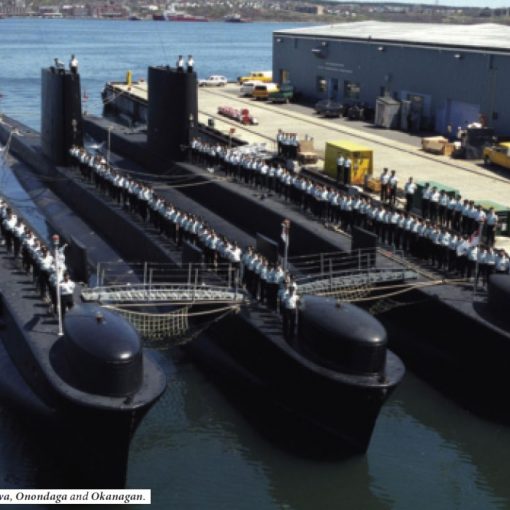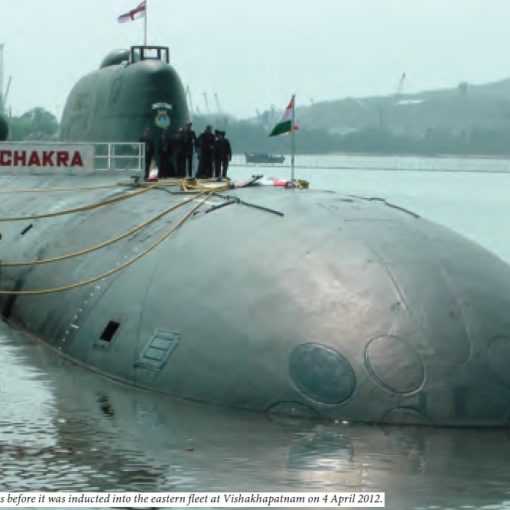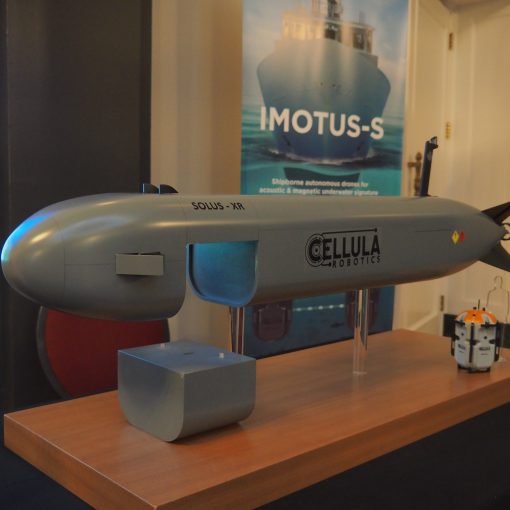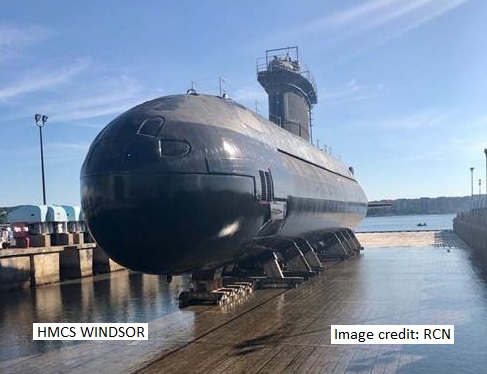By Dr. Ann Griffiths, 24 May 2024
In April I was invited by SAAB to visit Sweden to meet with company representatives and tour their naval facilities – at their expense. I accepted the invitation. I have just returned from the trip and in this post I will offer some initial general observations. A more comprehensive account will appear in the next issue of Canadian Naval Review. As a first observation, it is clear that SAAB is serious about public relations. Defence journalists/military analysts from both Canada and the United States were invited on the tour. As well, the high level of the personnel briefing us was impressive.
What I want to comment about here is the difference between Canada and Sweden in terms of defence industry, policy and planning. Despite being a much smaller country than Canada in both geography and population, Sweden has a robust defence industry. SAAB is the most well known but there are others. Companies in Sweden build:
- missiles and missile defence systems;
- military fixed-wing aircraft;
- submarines;
- military radar;
- tactical communications systems;
- electronic warfare systems;
- naval vessels and surface combatants; and
- military land vehicles.[1]
It is difficult to think of a Canadian defence company that would equate to the size and versatility of SAAB.
The tour focused on naval elements, but it was clear that SAAB has some impressive air and land products – as a side note, there was obvious disappointment (although perhaps not surprise) that the Gripen fighter aircraft was not selected by Canada.
In terms of naval policy, there are some interesting differences between Canada and Sweden. Sweden has had a navy for centuries – one only need visit the Wasa Museum to see that (although it’s not a good example of Swedish shipbuilding). The Swedish focus has historically been on the Baltic Sea. This sea is shallow and small and busy. It has significant undersea infrastructure, and thousands of mines left over from WWI and WWII. As well, Sweden has neighbours around the sea – Denmark, Germany, Poland, Latvia, Lithuania, Estonia, Finland, and of course Russia. During the Cold War, the Soviet Union was right across the Baltic, and interactions with the Baltic Sea Fleet were common. Despite being a northern country, if you look at a map you’ll see that Sweden does not have a sea border in the North, so naval focus has not been on Arctic waters.
This is unlike the situation for Canada. Canada has oceans on three sides that insulate it from other countries. It’s a long way from Canada to most areas of interest and therefore Canada operates a blue-water navy. And, according to the latest defence policy, the Arctic is an area of primary concern for the RCN. The Baltic is much warmer than the northern oceans in which the Canadian navy will operate. And the Canadian Arctic is remote from naval facilities, unlike the more populated areas around the Baltic, which makes naval operations challenging.
While Canada, as other Western countries, suffers from personnel shortages, Sweden has fewer problems in this regard. In the heady days of the early post-Cold War period, Sweden got rid of mandatory military conscription. But in the less-than-optimistic days of the 2020s, it has reintroduced a limited version of it. It is difficult to imagine how even a limited version of conscription would go over in Canada – not well, I suspect.
Despite 200 years of neutrality, Sweden has embraced its new membership in NATO. How this will change its defence industry is open to debate. Its neutrality meant that it had to rely on itself for defence. Its location across the Baltic from the Soviet Union, and now a belligerent Russia at war in Ukraine, has made the Swedes cognisant of threat, hence the robust defence industry. In briefings we were told that Sweden is already interoperable with NATO forces as it has exercised with them regularly – although some information and communication methods and standards will need to be adjusted. Will its membership in NATO mean greater opportunities for SAAB and other Swedish companies, or will SAAB have to fight to retain its influence within Sweden as the defence companies of NATO countries try to move in?[2] The public relations push that led to this tour seems to illustrate that SAAB is trying to raise its profile in Canada (and the United States) in the hope of future defence contracts – and submarines in particular. More on this to come.
Canada is fortunate in its location and that it has a superpower as its only neighbour and thus the threat to the physical security of the country has never seemed as real. Sweden has no such luxury, and its defence industry illustrates this.
[1] See Sweden Defense Market Size and Trends, Budget Allocation, Regulations, Key Acquisitions, Competitive Landscape and Forecast, 2023-2028 (globaldata.com).
[2] For a discussion of this, see Sweden’s defence industry: NATO membership promises new markets but poses challenges (iiss.org)






5 thoughts on “Sweden, SAAB, and Defence”
Hello Dr. Griffiths. I have always contended that Sweden has “pulled well above its own weight” with regard to its Armed Forces even before they recently joined NATO. Unlike Sweden, Canada always seems to have a benign attitude towards our own military with a “our friends to the south will defend us so, why invest in the military” smugness. Are we really that arrogant, or is it just ignorance? Canada can take a few lessons from Sweden and its citizens who seem to “get it right” along with most of our other Allies. Sweden, not only because of its closeness to Russia, have an intellect and first hand knowledge of where it wants to go and can see clearly the future as it relates to its military preparedness, whereas Canada seems to be drifting in the winds and on the seas with no clear direction. In my opinion of course.
You are absolutely correct when calling out our not so open and transparent government we have, far from it. They no longer have the trust of the majority of the Canadian people. If it wasn’t for the men and women we do have in the military we would have nothing at all. The government says one year we will be at 2% of our GDP for defence, next meeting it will be 1.7% in 20 years. Canadians across this country should hold the government accountable for their actions.
Sweden is a defensive country. It’s entire military is centered on that philosophy and you can see that in the platforms it designs. I wouldn’t say they punch above their weight, I would say they can hold their own if needed on home soil, beyond that they would fall apart.
Their citizens also pay a massive price for all this in that their taxes equate to about 52% of income, and most importantly they actually exceed the NATO 2% pledge (2.2%), and don’t forget there are only about 10 million people in the country as well
I think in Canada we have become very complacent and arrogant around defense and someday our ignorance to this may cost us dearly.
I guess the term blue water navy has very loose definitions because I in no way would say Canada is a blue water navy. Looking at the navies around the world there are very few true blue water navies, those being USA UK France and now China.
I would say Canada is more green water capability-wise. The metric I have always worked to is: is the navy able to project power well beyond their border by using a combination of services; are they able to maintain that indefinitely supporting it with logistics; is there the ability to operate independently in action using their own command and control function.
With the above noted Canada, isn’t able to deliver on many of these if any so Canada is quite like Sweden in some ways.
Sweden places a great emphasis on submarines and for littoral work. It’s hard to beat them on their home turf, indeed even when outside their home waters and a ocean away they can still cause havoc just ask the USS Ronald Reagan Battle group – yet these submarines are also old and need replacing in the coming years.
Their surface fleet also does leave a lot to be desired. Their newest main combat vessels – the Visby class – are now 20 years old and will be due for replacement in the next decade, and their other vessels are about 30 – 35 years old and needed replacing about 8-10 years ago.
As you can see the Swedish and Canadian navies have some similarities with their procurement and replacement with assets although this is where Sweden departs from Canada in that they don’t spend decades squabbling about it.
I would agree that Canada as of right now is fortunate to have the USA to the south, however I point out that our southern neighbor hasn’t always been friendly, and if we are just simply going to rely on our proximity for defense then I would suggest this is a dangerous course of action.
I really enjoyed reading your recap of your trip to Sweden as a guest of SAAB and your overview and comparisons of Canada and Sweden’s Naval challenges both in regard to size and remoteness. Thanks for that. JM Coholan